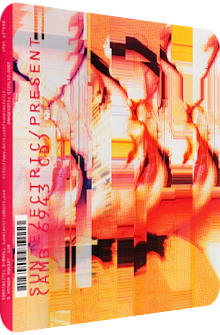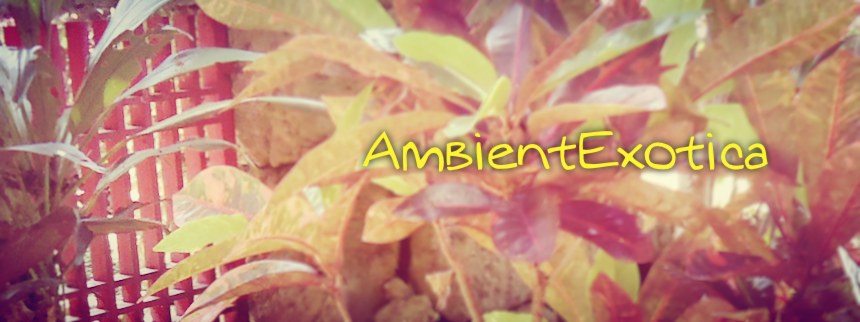
Sun Electric
Present
1996
It's one of the curious and often neglected or even largely unknown coincidences in the history of electronic music, but when I think about the Berlin-based duo Tom Thiel and Max Loderbauer aka Sun Electric, I am always amazed about how much their style changed from album to album and how similar their quirky constructions were to the much more hailed British duo of Ed Handley and Andy Turner, better known as Plaid. Present, released in 1996 on the R&S sublabel Apollo, precedes Plaid's proper debut album Not For Threes by a few months, but delivers a comparable variety, to say it objectively. However, my highly subjective take on this is much more glowing: Present is an iridescent album that shows a tremendous wealth of swirling melodies, Jungle-related but more clever rhythms and glittering synth textures that oscillate between joy and exuberance on the one hand or augment the mystique and tranquility on the other. A whopping amount of 13 tracks is included, and the atmosphere differs yet again. While their 1993 debut Kitchen delivered a pumping 4/4 potpourri of blissful sweeps and (in)tense stabs, their live album 30.7.94 Live, released in 1995, is one of my ten most beloved beautiful Ambient albums of all time and creates an incredibly friendly luminescence of galactically spiraling coziness. Present marks the band's first attempt to really branch out and offer the widest variety of electronic compositions that are yet cohesively embedded in order to form a harmonious album. If you don't know this gemstone yet, you're probably put off by my brief mention of the Jungle/Drum 'n Bass genre, but don't worry; the beats may occasionally mimic the hectic frenzy of such productions, but the melodies and the synthscapes are always on the foreground and remain the most important elements of Sun Electric. Fine, and where does the Ambient genre fit in? Well, here's the little catch, for there aren't any beatless compositions on here other than the outro. The compositions that are closest to the genre are generally downbeat, but even the rapid-firing pieces rely heavily on whirring patterns and purified layers, i.e. the same ingredients that made their live album so gargantuan. If you don't mind eclectic beats as long as the synths are multicolored, I advise you to check this album out, read my review, or even both.
Spreewald launches the album, and it contains the former majesty, mystique and glory of their live album thanks to a balmy atmosphere created by electric pianos, wafting synth string eruptions and blurry bubble sweeps in the background. A dubby bassline is juxtaposed to crystalline glitters, and after about 100 seconds, a cymbal-laden clap-fueled downbeat is introduced that underlines the calming atmosphere very well. Spreewald is vintage Sun Electric. It's definitely Ambient, slightly melancholic and massages the belly due to its dubventures. A terrific opener that leads to a safari through a cyberspace jungle way before Lone achieved the same with his 2012 opus Galaxy Garden. Starting with reversed pulses, the pristine, purified synth pads provide a formidable base frame that is further rounded off by synthetic Brazilian percussion, a 4/4 bassline and wonkily bouncing clangs and overdriven, highly filtered guitar loops. The song is upbeat and hectic, evoking a movement through colorful landscapes without being overly frantic. Up next is Eya which has also been released as a single/EP in the same year. It's the only harsh song on the album, mimicking the energetic roughness of Future Sound Of London's hyper-hectic anthem of darkness called We Have Explosive of the same year. Warped, robotic "eya" samples are meshed with Thomas Fehlmann-like Italo synth stabs, and since he's the producer of the album, this is surely no coincidence. Sizzling percussion, liquid cymbals and bouncy wobbles are spread throughout a song that is farther away from the Ambient genre as necessary. It is catchy, but too acidic and baneful for my taste. Luckily, the following Parallax suits my needs better and is yet another vintage song, harking back to the duo's techno phase of 1993. Pumping club-compatible beats, a deep bass melody and another inclusion of Detroit stabs add a strong depth to the song that is brightened by electric guitar twangs and shimmering faux-brass loops. It's a very reduced song and again not overly keen on shimmering synths, but from this point on, the album gets really mellow.
Bagatto is a terrific peace of grey-tinted melancholia. Spectral synth storms are embedded in-between Jungle-esque eclecticism and gloomy pad accompaniments. The textures are dense and tensely layered, and it is shortly before the fifth minute that incisive synth strings boost the melancholy and sadness, and once the beats fade out, only the shakers, hi hats and the strings remain. On Bagatto, the band is indecisive about the right direction, but somehow the duo manages it to merge the different moods together, a feat they exceed with the following Cristal Bollore, a seven and a half minutes long centerpiece of mystified ambience. An enigmatically glistening four-note synth loop is accompanied by frog-like croaks, a high-pitched bass melody, electric current drones and gentle bass drops. A piercing synth string fades in and out, at times raising the tension. Additional blurry whirls drive the plasticity further. From this phase onwards, the song keeps the arcane aura and doesn't change a bit. It is a marvelously focused piece that is fragile, maybe even a bit gelid, but never off-putting or inaccessible. While the fantastic Goldstück (either roughly translatable as gold coin or figurative-amorously as honey) is based on an über-pumping 4/4 beat with monotonous synth stabs, tremoling sirens, laser pitches plus a wonderfully quirky and catchy Casio-like downspiraling melody that makes it perfectly suitable for jogging or other exercises, Quaila harks back on the salad days of early Rave tunes by featuring a female opera singer towering over a Jungle beat with jazzy double bass backings, and a phantasmagorically hazy seven-note melody full of enchantment and wonders. It is tremendously catchy, as are the bridges in which the opera singer appears. And yes, Quaila can only be distantly related to the Ambient genre, but the melodies are enthralling and comforting enough to consider it as a contender.
We have yet again reached a point where the album gets even better. The last five tracks are real treats and oscillate between gorgeous melodies and quirky curlicues. Waitati Post is co-written by Thomas Fehlmann, although you wouldn't know it, as his trademark sound cannot be easily distilled. It's a terrific skit with faux-bamboo rods and exotic percussion, crunchy Dub lines, hectic percussion and the sun-soaked blurriness of two-note synth pad accompaniments. It is after more than a minute that the song really opens thanks to a dubby five-note bassline, gleaming glints in the background that get louder and more prominent, revealing their multitextured beauty step by step while the exotic Jungle beats are hammering. A slight glimpse of madness is injected in form of cyber circus-evoking loops of Rave craziness before the last phase starts with the euphoric rapture of oscillating synth streams that contain happiness and power. Funky electric piano bells in the background round off this mercurial piece. Tassajara embeds Far Eastern four-note sequences in-between the polished synth textures and augments these with robotic bounces, loops of chirping birds and cuckoos and upfront percussion. The complexity of the latter becomes also apparent in the middle section where the melodies are muted and make room for the tribal beats. The song ends as it began, making Tassajara the parabola of the release. Wassa is another song that increases in both tension and sublimeness; starting with complex and quick breakbeat-jungle hybrid, the stuttering synth pads soon merge with cherubic synth sweeps and a rising golden-shimmering three-note motif that is filtered, becomes clear and muffled and is accompanied by beautiful bells. The penultimate In Vitro brings back the mystique and tension on a cymbal-laden groove, with spiraling synths cascades, rapid-firing beats and a 303 acid middle section that is as wobbling as it is lively and limewashed and thus not overly biting. The final Uschba is a pure Ambient track with a mixture of melancholia and child-like awe. Coruscating crystals and glittering high frequency sparkles are juxtaposed to thin drones and various buzzes that create a magical aura as if one was in an illuminated dripstone cave. Present hence ends on a bold mystery note that meandered through the majority of the tracks and can be described as the golden thread that ties together the diverse tracks.
Sun Electric deliver a playful, melodious second studio album that is created during the experimental halcyon days of electronic music. Torn between the rise of the IDM genre and the analogue warmth of their previous releases, Loderbauer and Thiel go all in with Present and intermix remnants of the then popular Jungle craze with either quirky or beautifully sparkling melodies. Mystique, pure joy and the occasional roughness are all embedded in here, and as I've pointed out, the golden thread is probably a pinch or a bolder dose of mystery that can be found in every track, but not always in a glaring fashion. My rose-tinted nostalgia may be to blame (even though I've discovered the album a few years after its release), but I perceive Ambient segments and flavors throughout the tracks, even though they are often covered by a thicket of beats. But the mood is almost always inviting and friendly, with only the single Eya as a counterexample. Showstoppers from an Ambient-related viewpoint are Spreewald and Cristal Bollore, while the pumping luminescence of Goldstück and the cherubic synth eruption of Waitati Post are great examples of melodious workout-compatible tracks. All in all, Present is a terrific piece and can easily cope with the likeminded releases by Plaid. Believe me, the Jungle beats aren't that formulaic, and it is the synths that shimmer in many colors and provide for a luxurious balm that is often mystical, but also warm. Nothing beats Sun Electric's majestic live album. Once you come to terms with this fact, Present and the follow-up Via Nostra are the next best things.
Ambient Review 101: Sun Electric – Present (1996). Originally published on Aug. 1, 2012 at AmbientExotica.com.
